
This article deals with available tools that offer solutions and could help you become more efficient and productive.
- Subject:
- Management
- Material Type:
- Reading
- Author:
- Ana-Maria Sanders
- Date Added:
- 03/03/2020

This article deals with available tools that offer solutions and could help you become more efficient and productive.
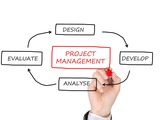
Marketing and project management should always go hand in hand. If you are thinking of different ways to market your products and services, you also need to find methods to improve your marketing project management. Here are simple ways to help improve your marketing project management.
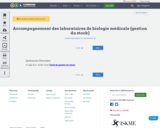
Il s’agit d’un fichier Excel (Outil de gestion du stock)

This course introduces interactive oral and interpersonal communication skills critical to leaders, including strategies for presenting to a hostile audience, running effective and productive meetings, active listening, and contributing to group decision-making. There are team-run classes on chosen communication topics, and an individual analysis of leadership qualities and characteristics. Students deliver an oral presentation and an executive summary, both aimed at a business audience.

This course draws on a wide range of perspectives to explore the roots of long term competitive advantage in unusually successful firms. Using a combination of cases, simulations, readings and, most importantly, lively discussion, the course will explore the ways in which long term advantage is built from first mover advantage, increasing returns, and unique organizational competencies. We will focus particularly on the ways in which the actions of senior management build competitive advantage over time, and on the strategic implications of understanding the roots of a firm's success.

Description: Advertising Management is a planned managerial process designed to oversee and control the various advertising activities – Here we are going to see an introduction, scope, feature and appeals of advertising, in brief.Learning outcome: After learning this content, learner can understand the concepts of feature elements, colour scheme, appeal applied in an advertisement

This course meets weekly to discuss recent aerospace history and current events, in order to understand how they are responsible for the state of the aerospace industry. With invited subject matter experts participating in nearly every session, students have an opportunity to hone their insight through truly informed discussion. The aim of the course is to prepare junior and senior level students for their first industry experiences.

This course addresses the architecting of air transportation systems. The focus is on the conceptual phase of product definition, including technical, economic, market, environmental, regulatory, legal, manufacturing, and societal factors. It centers on a realistic system case study and includes a number of lectures from industry and government. Past examples include: the Very Large Transport Aircraft, a Supersonic Business Jet, and a Next Generation Cargo System. The course identifies the critical system level issues and analyzes them in depth via student team projects and individual assignments. The overall goal of the semester is to produce a business plan and a system specifications document that can be used to assess candidate systems.

This course provides an overview of airline management decision processes with a focus on economic issues and their relationship to operations planning models and decision support tools. It emphasizes the application of economic models of demand, pricing, costs, and supply to airline markets and networks, and it examines industry practice and emerging methods for fleet planning, route network design, scheduling, pricing and revenue management.
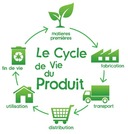
Ce document détaille la démarche de l’analyse ACV.la lecture de ce document permet de découvrir les domaines d’application de la méthode ACV et d'appréhender les avantages et les inconvénients de l’analyse.A la fin de la lecture, l'apprenant sera capable de Maitriser les outils d’analyse des impacts.

Ce cours traite des éléments liés au milieu physique et plus précisément l'espace physique rural et les méthodes utilisées pour l'analyse de ces milieux,يتناول هذا المساق العناصر المتعلقة بالبيئة المادية وبشكل أكثر تحديدا الفضاء المادي الريفي والأساليب المستخدمة لتحليل هذه البيئات

This course presents real-world examples in which quantitative methods provide a significant competitive edge that has led to a first order impact on some of today's most important companies. We outline the competitive landscape and present the key quantitative methods that created the edge (data-mining, dynamic optimization, simulation), and discuss their impact.

15.875 is a project-based course that explores how organizations can use system dynamics to achieve important goals. In small groups, students learn modeling and consulting skills by working on a term-long project with real-life managers. A diverse set of businesses and organizations sponsor class projects, from start-ups to the Fortune 500. The course focuses on gaining practical insight from the system dynamics process, and appeals to people interested in system dynamics, consulting, or managerial policy-making.

The fact of scarcity forces individuals, firms, and societies to choose among alternative uses – or allocations – of its limited resources. Accordingly, the first part of this summer course seeks to understand how economists model the choice process of individual consumers and firms, and how markets work to coordinate these choices. It also examines how well markets perform this function using the economist's criterion of market efficiency.
Overall, this course focuses on microeconomics, with some topics from macroeconomics and international trade. It emphasizes the integration of theory, data, and judgment in the analysis of corporate decisions and public policy, and in the assessment of changing U.S. and international business environments.

While no businesses succeed based on their architecture or space design, many fail as a result of inattention to the power of spatial relationships. This course demonstrates through live case studies with managers and architects the value of strategic space planning and decision making in relation to business needs. The course presents conceptual frameworks for thinking about architecture, communication and organizations.
This course is offered during the Sloan Innovation Period (SIP), which is a one-week period at the MIT Sloan School of Management that occurs midway through each semester.

This course provides an introduction to bargaining and negotiation in public, business, and legal settings. It combines a "hands-on" skill-building orientation with a look at pertinent social theory. Strategy, communications, ethics, and institutional influences are examined as they influence the ability of actors to analyze problems, negotiate agreements, and resolve disputes in social, organizational, and political circumstances characterized by interdependent interests.

En este vídeo, descubre cómo desarrollar campañas publicitarias virtuales exitosas utilizando únicamente recursos gratuitos y de uso abierto. Hemos creado es...
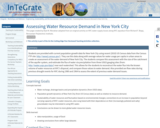
An exercise assessing the water demand of New York City and population dynamics underlying that demand is provided. Visualization of first order water resource estimates using precipitation data and a known water storage volume are used to draw conclusions about drought risk and the sustainability of NYC water supplies.
(Note: this resource was added to OER Commons as part of a batch upload of over 2,200 records. If you notice an issue with the quality of the metadata, please let us know by using the 'report' button and we will flag it for consideration.)
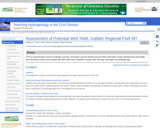
This project helps familiarize students with data commonly available from well drillers, the Department of Natural Resources and Conservation, and the Montana Bureau of Mines and Geology. Such data is often used to produce consulting reports. In this exercise, students practice working with available data and writing a consulting report while working on a real project of local interest. The question involves the probability of success in drilling a large well for a new county park. Students are given various maps and are guided through the use of a statewide database that contains well logs and well data. The outcome is a written report that describes the location and general geology of the site, uses the available data to summarize the types of materials that a driller might encounter, answers the questions that the client is interested in, and identifies problems or advantages presented by the groundwater system as indicated by available data.
(Note: this resource was added to OER Commons as part of a batch upload of over 2,200 records. If you notice an issue with the quality of the metadata, please let us know by using the 'report' button and we will flag it for consideration.)
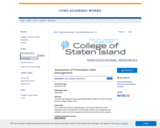
This rubric was designed to assess presentation skills for student in the BS in Business at CUNY College of Staten Island.